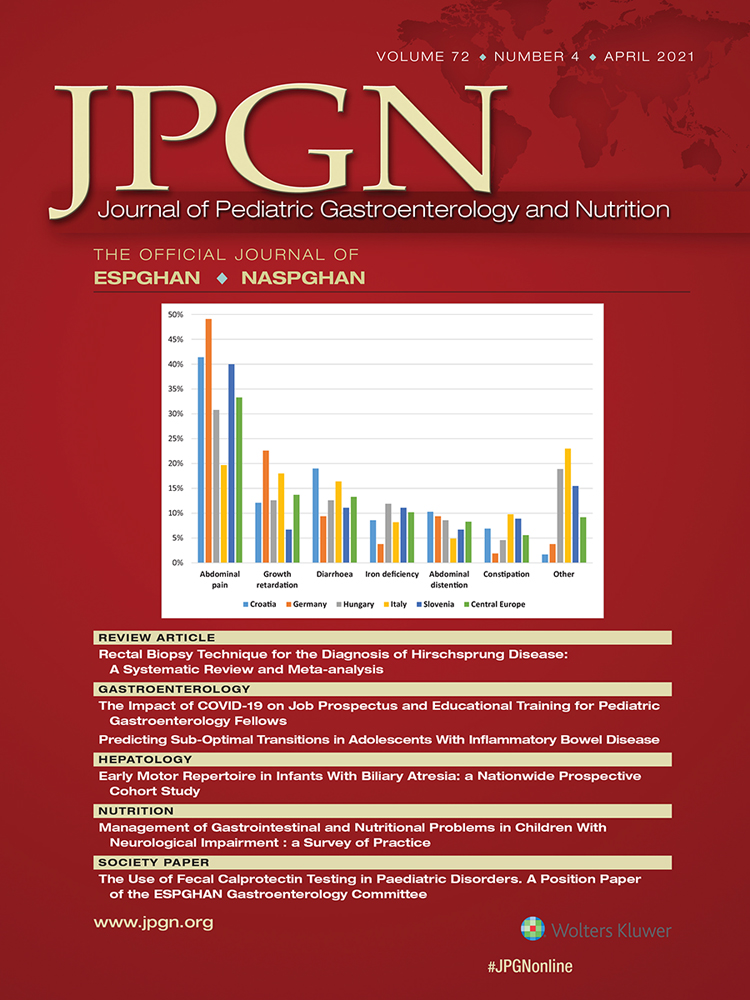Megacystis Microcolon Intestinal Hypoperistalsis Syndrome
A Case Series With Long-term Follow-up and Prolonged Survival
Supplemental digital content is available for this article. Direct URL citations appear in the printed text, and links to the digital files are provided in the HTML text of this article on the journal's Web site (www.jpgn.org).
National Institutes of Health support through Clinical and Translational Sciences Institute (CTSI) at the University of Pittsburgh Grant Number UL1-TR-001857 for REDCap (Research Electronic Data Capture).
The authors report no conflicts of interest.
ABSTRACT
Objectives:
Describe clinical characteristics, management, and outcome in a cohort of megacystis microcolon intestinal hypoperistalsis syndrome (MMIHS) patients.
Methods:
We conducted a retrospective chart review of MMIHS patients followed at a large transplant and intestinal rehabilitation center over a period of 17 years.
Results:
We identified 25 patients with MMIHS (68% girls, 13 transplanted). One transplanted and 1 nontransplanted patient were lost to follow-up. We estimated 100, 100, and 86% for 5-, 10-, and 20-year survival, respectively, with only 1 death. Of the 22 patients alive at the time of study (11 transplanted, 11 nontransplanted), median age was 9.2 years (range 2.7–22.9 years). Longest posttransplant follow-up was 16 years. Seventeen patients had available prenatal imaging reports; all showed distended bladder. Eight had genetic testing (5, ACTG2; 2, MYH11; 1, MYL9). Almost all patients had normal growth with median weight z-score −0.77 (interquartile range −1.39 to 0.26), height z score −1.2 (−2.04 to −0.48) and body mass index z-score 0.23 (−0.37 to 0.93) with no statistical difference between transplanted and nontransplanted patients. All nontransplanted patients were on parenteral nutrition with minimal/no feeds, and all except 1 of the transplanted patients were on full enteral feeds. Recent average bilirubin, INR, albumin, and creatinine fell within the reference ranges.
Conclusions:
This is the largest single-center case series with the longest duration of follow-up for MMIHS patients. In the current era of improved intestinal rehabilitation and transplantation, MMIHS patients have excellent outcomes in survival, growth, and liver function. This observation contradicts previous reports and should alter counselling and management decisions in these patients at diagnosis.




